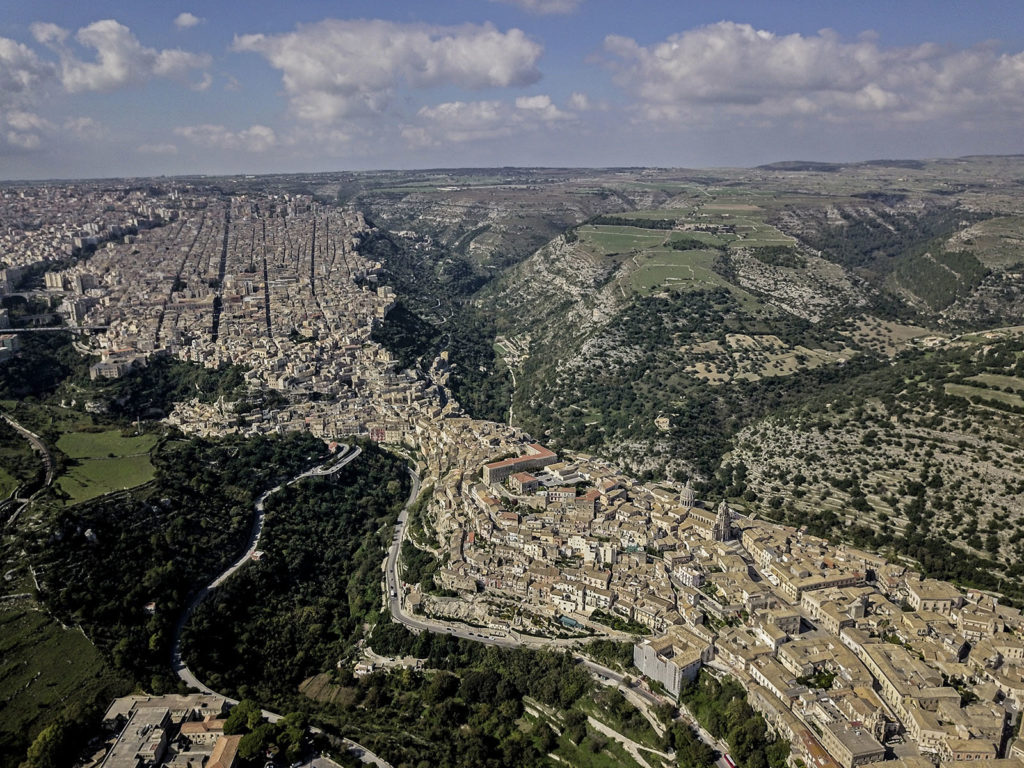The town of Ragusa Ibla is built across three different hilly areas separated by a deep valley.
The town is the union of Ibla and Ragusa: Ibla was founded by the Sicels, before the birth of Christ. Ragusa, on the other hand, has much less ancient origins and is linked to the tragic earthquake. Following the earthquake, when deciding where to rebuild the town, no agreement could be reached.
Following the earthquake, when deciding where to rebuild the town, no agreement could be reached.
The population was divided into two factions: the sangiorgiari suggested the old site; the sangiovannari sought to rebuild it elsewhere.
The former were aristocrats of very old lineage who lived in the parish of San Giorgio (St. George); the Sangiovannari, on the other hand, who lived outside the walls in the district of San Giovanni (St. John), were made up of the poor and the nouveau riche. Neither side wanted to give in, so two independent towns were built.  Ibla was rebuilt on a lower hill than Ragusa and the old road layout was maintained.
Ibla was rebuilt on a lower hill than Ragusa and the old road layout was maintained.
Ragusa was planned perfectly with a system of roads that crossed at right angles.
Though rebuilt independently and autonomously from one another, Ragusa and Ibla share the style of Baroque art.
Over time the clear division was lost and the inhabitants began to live in the intermediate space, but it was not until 1926 that Ibla and Ragusa were reunited.